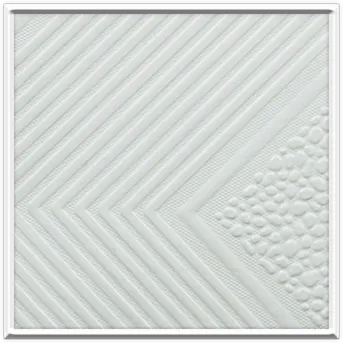- Afrikaans
- Albanian
- Amharic
- Arabic
- Armenian
- Azerbaijani
- Basque
- Belarusian
- Bengali
- Bosnian
- Bulgarian
- Catalan
- Cebuano
- Corsican
- Croatian
- Czech
- Danish
- Dutch
- English
- Esperanto
- Estonian
- French
- German
- Greek
- Hindi
- Indonesian
- irish
- Italian
- Japanese
- Korean
- Lao
- Malay
- Myanmar
- Norwegian
- Norwegian
- Polish
- Portuguese
- Romanian
- Russian
- Serbian
- Spanish
- Swedish
- Thai
- Turkish
- Ukrainian
- Uzbek
- Vietnamese
dets. . 25, 2024 19:48 Back to list
Ceiling Access Panels for Easy Maintenance and Efficient Space Management Solutions
The Importance of Ceiling Access Panels A Comprehensive Overview
In both residential and commercial construction, ceiling access panels play a critical role in ensuring accessibility and functionality within a building's infrastructure. While these components may often go unnoticed, their importance cannot be overstated. This article explores the significance of ceiling access panels, their various types, applications, and considerations for installation.
What are Ceiling Access Panels?
Ceiling access panels are openings in the ceiling that provide access to areas that require periodic maintenance, such as plumbing, electrical work, and HVAC systems. These panels can be made from various materials, including metal, plastic, and gypsum, and are designed to blend seamlessly with the surrounding surfaces. They typically feature a door or flap that can be securely closed and locked when not in use.
Types of Ceiling Access Panels
1. Standard Access Panels Standard access panels are the most commonly used type. They are designed for routine access and can be painted or finished to match the ceiling surface. These panels are often used in residential buildings for accessing electrical junction boxes and plumbing lines.
2. Fire-Rated Access Panels In commercial settings, particularly in buildings subject to fire safety codes, fire-rated access panels are essential. These panels are designed to withstand high temperatures and prevent the spread of fire and smoke. They are often used in ceilings that conceal fire suppression systems, ensuring compliance with safety regulations.
3. Security Access Panels In facilities that house sensitive information or materials, security access panels provide a higher level of protection. These panels come equipped with locks and may feature reinforced designs to prevent unauthorized access. Common applications include server rooms and laboratories.
4. Soundproof Access Panels For spaces where noise control is critical, soundproof access panels help maintain acoustical integrity. These panels are constructed with sound-absorbing materials, making them ideal for recording studios and conference rooms.
5. Custom Access Panels For unique architectural requirements, custom access panels can be designed to fit specific spaces and functionalities. These panels can be tailored to meet the aesthetic needs of a building while maintaining ease of access.
Applications of Ceiling Access Panels
Ceiling access panels are ubiquitous in various settings
ceiling access panel

- Residential Buildings Homeowners often use access panels to provide easy access to attics, crawl spaces, plumbing systems, and electrical wiring. This access is vital for home repairs and maintenance.
- Commercial Buildings In offices, hospitals, and educational institutions, access panels facilitate maintenance of HVAC systems, fire safety equipment, and electrical infrastructures. They ensure that technicians can efficiently perform necessary inspections and repairs.
- Industrial Facilities Manufacturing plants and warehouses often require access panels to enable quick maintenance of heavy machinery and complex mechanical systems, minimizing downtime.
Considerations for Installation
When installing ceiling access panels, several factors should be taken into account
1. Location Selecting the appropriate location for an access panel is crucial. It should be positioned where maintenance is most likely needed, allowing for unobtrusive access without disrupting the space’s functionality.
2. Material Choice The choice of material can greatly affect durability, fire resistance, and aesthetic appeal. For instance, metal panels may be preferred in high-traffic areas, while drywall panels may blend better in residential settings.
3. Size The size of the access panel should correspond to the size of the equipment or systems that need to be accessed. It is important to strike a balance between accessibility and maintaining the ceiling's structural integrity.
4. Building Codes Compliance with building codes and safety regulations is essential. This may include fire safety standards for fire-rated access panels and ensuring that security measures meet legal requirements.
5. Aesthetics For commercial spaces, access panels can be embellished to match the interior design. This consideration can prevent a lack of cohesion in the building’s aesthetics.
Conclusion
Ceiling access panels are essential components in any structure, facilitating maintenance while ensuring safety and functionality. Understanding the different types of access panels and their applications can help in making informed decisions regarding installation and usage. As the need for accessibility continues to grow in modern construction, the role of ceiling access panels will remain pivotal for the efficiency and longevity of building operations. Investing in quality access solutions not only enhances operational efficiency but also contributes to the overall safety and maintenance of any facility.
-
Transform Interiors with PVC Gypsum Ceiling: A Stylish, Durable, and Moisture-Resistant SolutionNewsMay.19,2025
-
The Smart Interior Upgrade: Discover the Durability and Versatility of Gypsum Ceiling Access Panel SolutionsNewsMay.19,2025
-
The Smart Choice for Interior Design: Discover the Value of PVC Gypsum Ceiling SolutionsNewsMay.19,2025
-
Mineral Fiber Ceiling Tiles: The Smart Blend of Performance and AestheticsNewsMay.19,2025
-
Mineral Fiber Ceiling Tiles: The Superior Choice Over Gypsum for Sound and Fire SafetyNewsMay.19,2025
-
Mineral Fiber Ceiling Tiles: Eco-Friendly Strength and Style for Every CeilingNewsMay.19,2025







